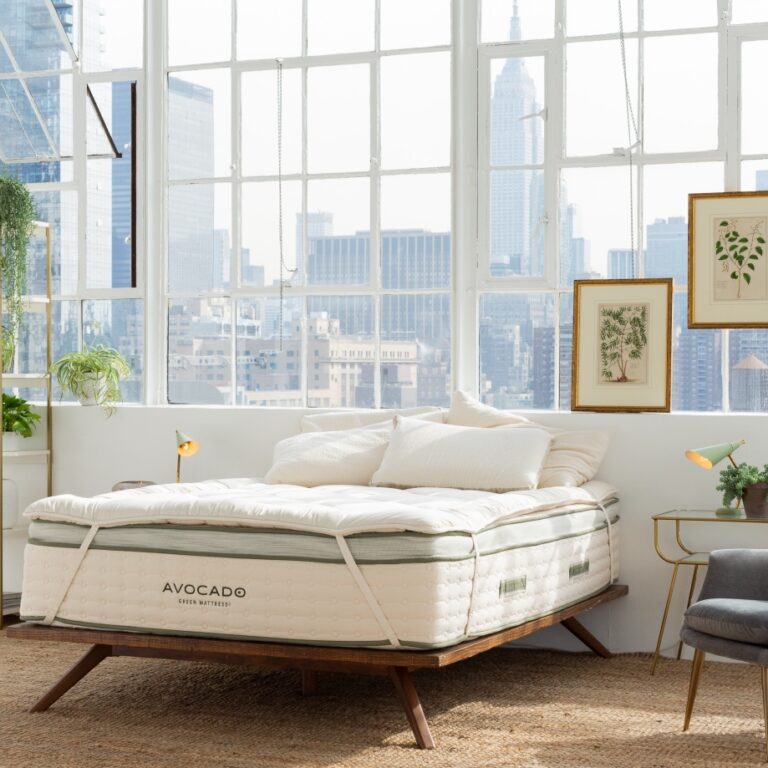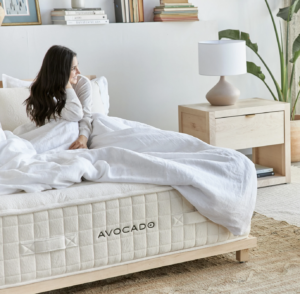We spend nearly a third of our lives in bed, so it only makes sense to design our bedrooms for optimal rest. One way to do that? Let nature in.
Biophilic design—or the practice of incorporating natural elements into your home—isn’t just aesthetically pleasing. It’s also backed by science. Research has shown that even brief exposure to natural environments can reduce stress, lower blood pressure, and boost mood and cognitive function. And all of those things? Directly linked to better, deeper sleep.
By weaving in natural materials, organic textures, and calming colors, a biophilic bedroom becomes more than just a place to crash—it becomes a retreat. One that not only looks beautiful, but also helps your body and mind fully recharge.
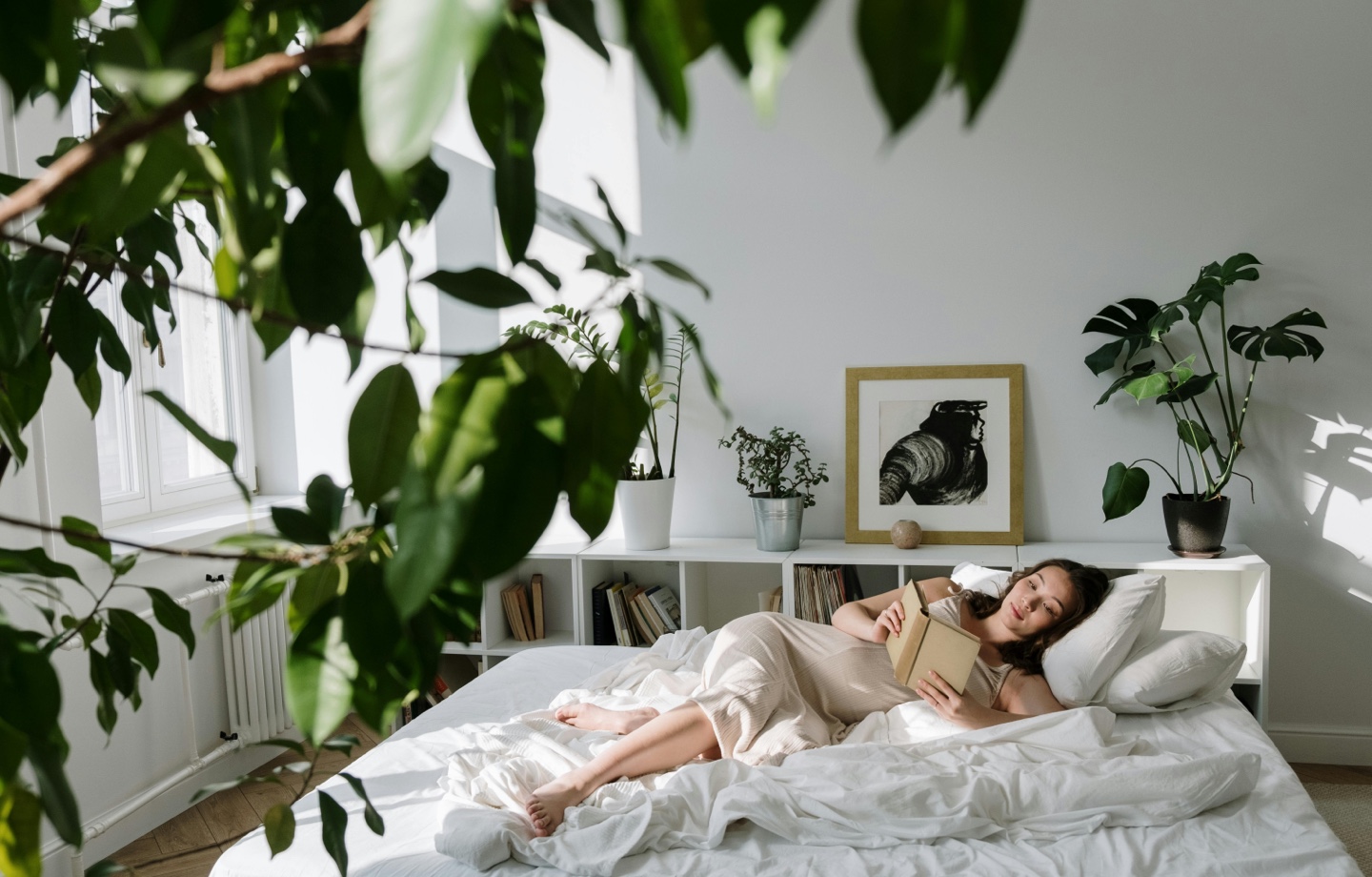
Read More: How to Create a Low-Cortisol Bedroom Aesthetic
So, What Is Biophilic Design?
Biophilic design stems from the concept of biophilia, which suggests that humans have an inherent affinity for nature. This design approach incorporates natural materials, light, vegetation, and other elements to create environments that are proven to promote health and well-being. In the context of the bedroom, biophilic design can transform a mundane space into a tranquil retreat.
In short, biophilic design is about bringing the outside in. And when applied thoughtfully in the bedroom, it can help you feel more grounded, relaxed, and ready for rest.
The Science Behind Nature and Sleep
Research indicates that exposure to natural elements can reduce stress, lower blood pressure, and improve mood—all factors conducive to better sleep. For instance, incorporating plants into indoor spaces has been shown to purify air and increase humidity, creating a more comfortable sleeping environment.
Plus, natural light plays a pivotal role in regulating our circadian rhythms. Ensuring your bedroom receives ample daylight can help synchronize your internal clock, leading to more restful nights.
Incorporating Biophilic Elements into Your Bedroom
1. Natural Materials: Opt for furniture and decor made from wood, stone, clay, jute, rattan, and linen, all of which bring a tactile, grounding feel to your space. Whether it’s a raw wood nightstand, a smooth stone lamp base, or woven seagrass baskets—the more tactile, earthy textures you surround yourself with, the more grounded your space—and your nervous system—will feel.
2. Indoor Plants: Introducing greenery can enhance air quality and add a calming ambiance. Consider low-maintenance plants like snake plants, peace lilies, or pothos, which thrive indoors and require minimal care.
3. Nature-Inspired Colors: For a restful palette, look to the outdoors: sagey greens, sky blues, rich browns—but also the softer tones we associate with sand, soil, and clouds. Think sun-bleached linen, warm beige, soft white, or wool accents. These hues help create a space that feels open, grounded, and clean—all the perfect mixture for winding down.
4. Organic Bedding: Choose bedding made from natural fibers. Our Avocado Green Mattress and Organic Cotton Sheets are GOTS-certified and crafted with sustainability and comfort, bringing peace of mind and better sleep.
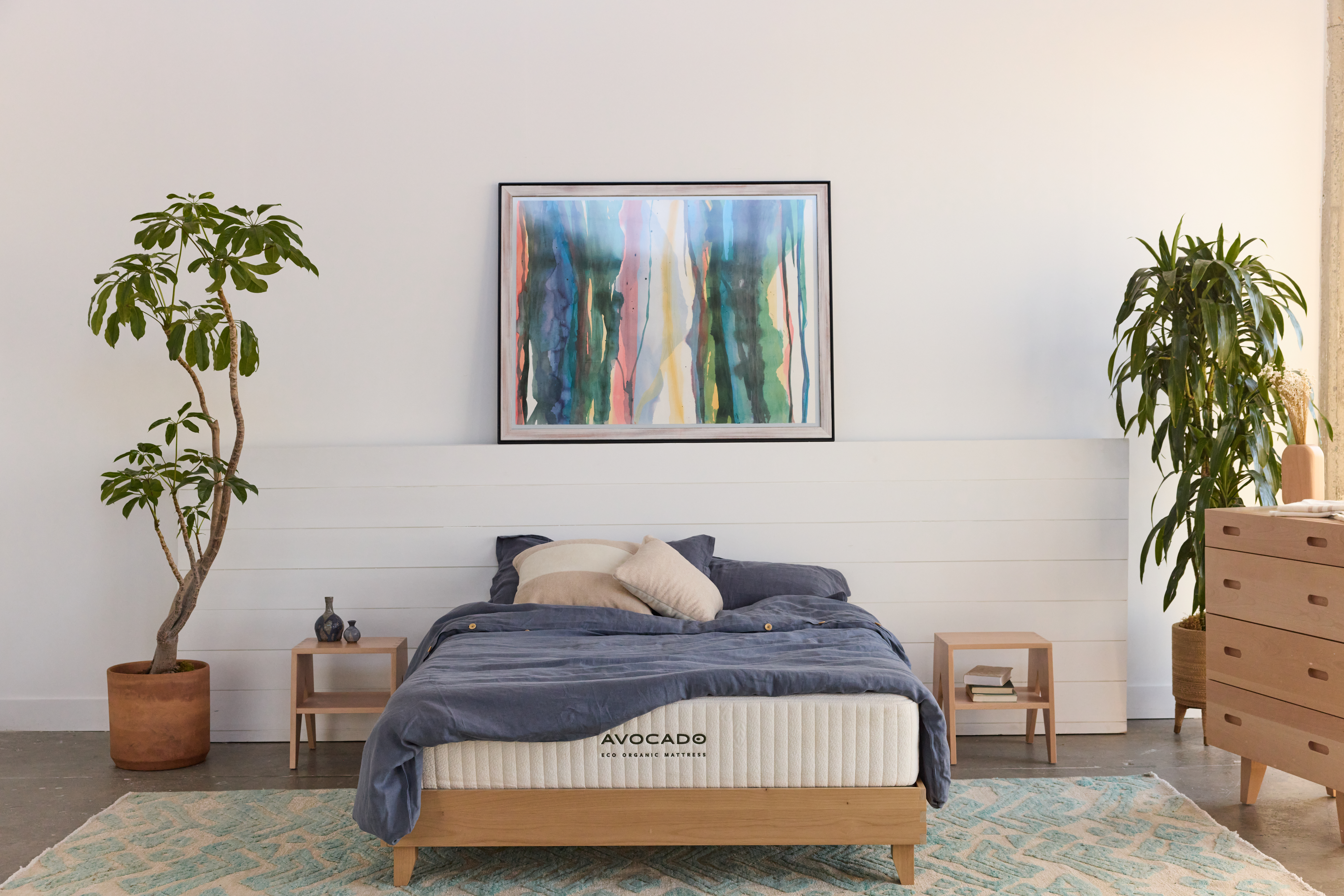
Read More: Pure Talalay: Our Secret To A Better Night’s Sleep
5. Maximize Natural Light: Choose a bedroom that gets good natural light and take full advantage—open the curtains, crack a window, and let in the breeze. Not only does sunlight help regulate your sleep-wake cycle, but fresh air can improve ventilation, mood, and mental clarity. Bonus points if your morning routine includes letting the sun hit your face before your phone does.
6. Maintain a Clutter-Free Environment: A cluttered space can lead to a cluttered mind. Keeping your bedroom tidy and organized promotes relaxation and reduces stress. Utilize natural storage solutions like woven baskets or wooden shelves to maintain order while adhering to biophilic principles.
7. Limit Electronic Devices: Electronic devices emit blue light, which can interfere with your circadian rhythm and disrupt sleep. Create a tech-free zone in your bedroom by removing TVs, computers, and even smartphones. Instead, engage in calming activities like reading or meditation before bed.
Create a Sensory Sanctuary
Biophilic design isn’t just about what you see—it’s about what you feel. Soft, breathable textiles like GOTS-certified organic cotton or wool, natural scents such as lavender or eucalyptus essential oils, and ambient sounds like birdsong or rainfall can help recreate the calming effects of nature. These sensory cues signal to your body that it’s time to unwind, making it easier to fall—and stay—asleep.
Benefits of a Biophilic Bedroom
A biophilic bedroom isn’t just beautiful—it’s functional, too. From improved air quality to deeper rest, here’s how bringing nature inside can support your health, sleep, and overall well-being:
- Enhanced Sleep Quality: Natural elements can create a calming environment, reducing insomnia and promoting deeper sleep.
- Improved Air Quality: Plants can filter toxins and increase oxygen levels, leading to a fresher atmosphere.
- Stress Reduction: Nature-inspired spaces have been linked to decreased cortisol levels, aiding in relaxation.
- Aesthetic Appeal: Biophilic design brings a timeless and organic beauty to interiors, making spaces more inviting.
The Root of the Matter
Embracing biophilic design in your bedroom isn’t just a visual choice—it’s a lifestyle one. By weaving nature into your personal space, you create an environment that not only looks and feels better, but one that helps your body rest the way it was meant to: deeply, naturally, and with ease.
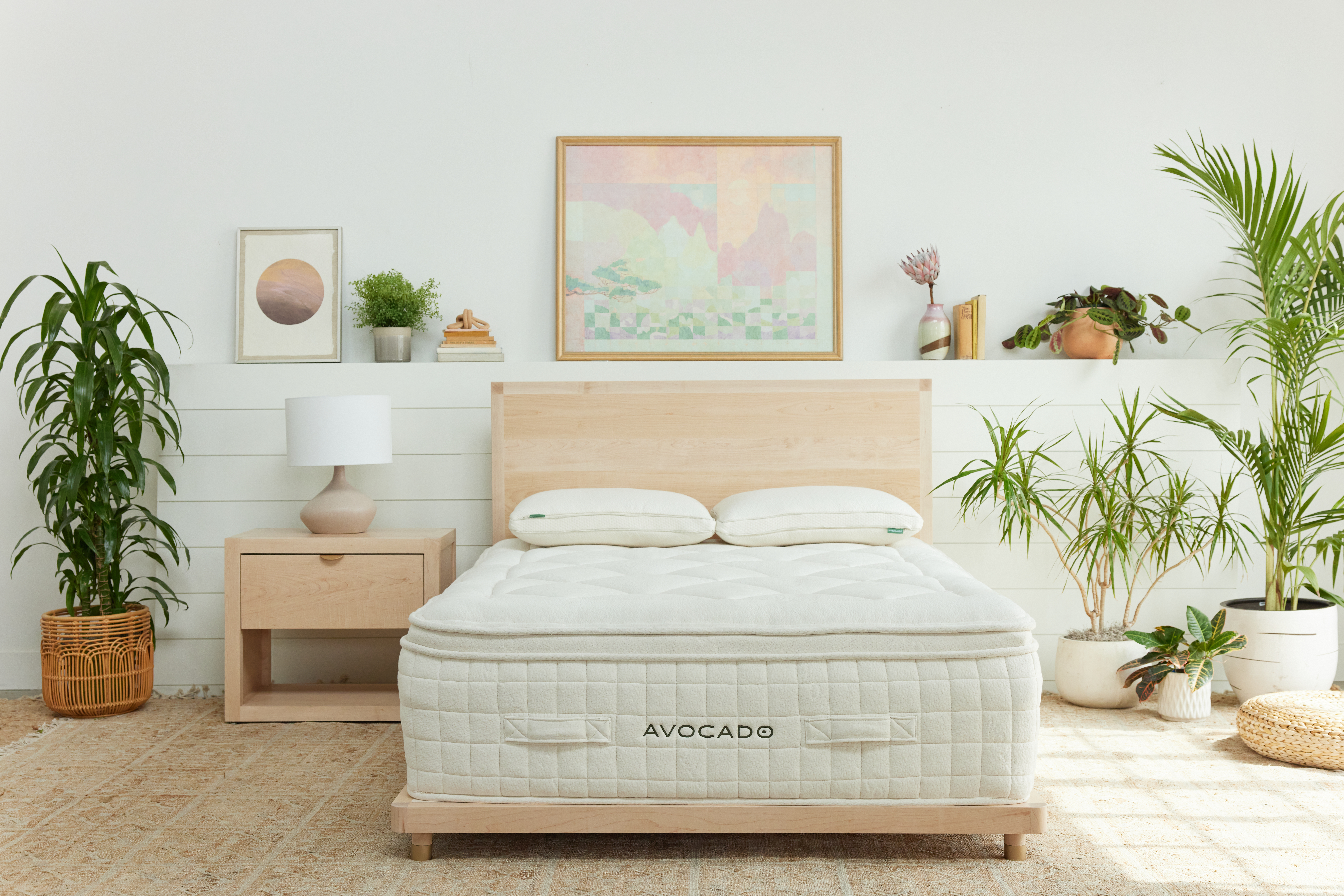
Read More: The Avocado Lookbook- Neutral Eclectic
Have feedback on our story? Email [email protected] to let us know what you think!

Shop Pillows
The Essential Organic Pillow Collection
Gentle, breathable, non-toxic support.


